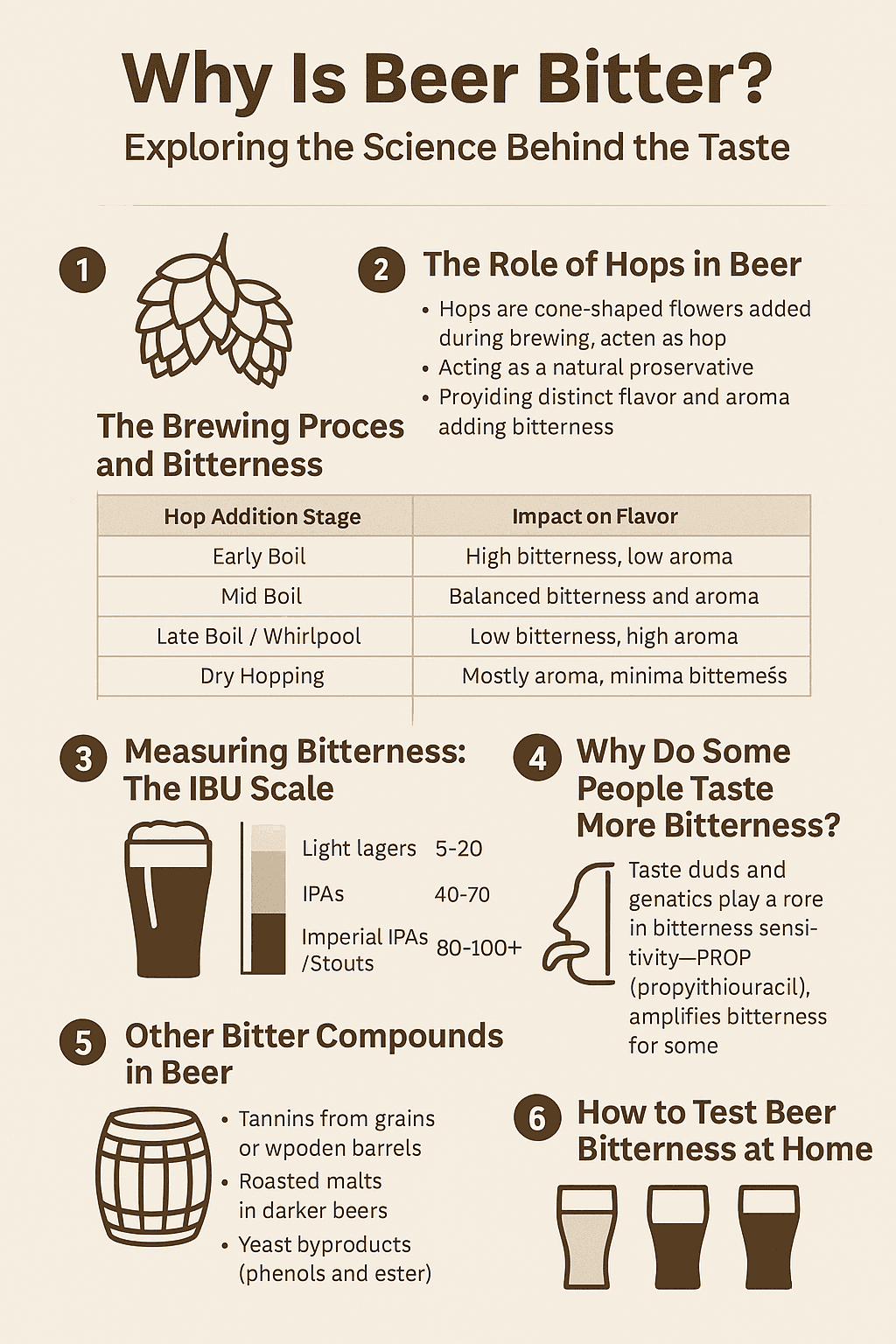If you’ve ever taken a sip of beer and noticed a sharp or lingering bitter taste, you’re not alone. Bitterness is a defining characteristic of many types of beer. But what actually makes beer bitter? Is it intentional? Is there a way to measure it? Let’s tap into the science behind beer bitterness.
🌿 1. The Role of Hops in Beer
The primary reason beer tastes bitter is hops. Hops are cone-shaped flowers from the hop plant (Humulus lupulus) that are added to beer during the brewing process.
➤ What do hops do?
Act as a natural preservative
Provide a distinct flavor and aroma
Add bitterness to balance the sweetness of malt
The alpha acids in hops are converted into iso-alpha acids when boiled, and these compounds give beer its bitter bite.
⚗️ 2. The Brewing Process and Bitterness
Bitterness doesn’t just come from the hops themselves—it also depends on how and when the hops are added during brewing.
Hop Addition Stage Impact on Flavor
Early Boil High bitterness, low aroma
Mid Boil Balanced bitterness and aroma
Late Boil / Whirlpool Low bitterness, high aroma
Dry Hopping Mostly aroma, minimal bitterness
The longer hops are boiled, the more bitter compounds are extracted.
🧪 3. Measuring Bitterness: The IBU Scale
The bitterness of beer is measured using IBUs (International Bitterness Units). The scale typically ranges from 5 to 100+:
Light lagers: 5–20 IBU
IPAs: 40–70 IBU
Imperial IPAs/Stouts: 80–100+ IBU
But here’s the twist: perceived bitterness depends on the beer’s malt profile, carbonation, and even your palate.
👅 4. Why Do Some People Taste More Bitterness?
Your taste buds and genetics also influence how bitter a beer tastes. Some people are more sensitive to bitter compounds like iso-alpha acids or tannins.
If beer tastes overwhelmingly bitter to you, you might be more sensitive to PROP (propylthiouracil)—a compound that amplifies bitterness for some.
🔬 5. Other Bitter Compounds in Beer
Besides hops, beer can get bitterness from:
Tannins from grains or wooden barrels
Roasted malts in darker beers
Yeast byproducts (phenols and esters)
These can contribute to bitterness or enhance the sharpness of the flavor.
🍻 6. How to Test Beer Bitterness at Home
You don’t need a lab! Try this simple taste test:
1. Select beers with varying IBU levels (e.g., lager, pale ale, IPA).
2. Chill and pour samples in clear glasses.
3. Taste from lightest to most bitter.
4. Use crackers and water to cleanse your palate between sips.
5. Rate each beer’s bitterness on a scale from 1 to 10.
You’ll start to notice how balance (malt vs. hops) plays a big role in how bitter a beer feels.
🍺 Final Thoughts: Bitterness Is a Balancing Act
Beer bitterness is intentional, scientific, and essential to its flavor profile. Whether you love a crisp lager or a punchy IPA, the bitterness is carefully calibrated through hops, brewing techniques, and chemical reactions.
Next time you sip a bitter beer, you’ll know you’re tasting centuries of brewing expertise.





